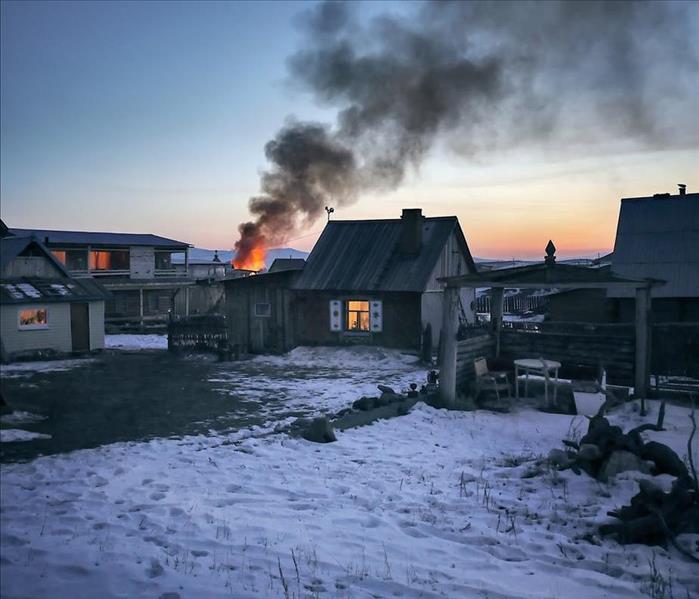What is Fire Damage and What to Do When it Happens?
3/22/2019 (Permalink)
According to the NFPA (National Fire and Protection Association), U.S. firefighters respond to a house fire every 88 seconds, and there are 7 fatalities every day because of house fires. Any fire regardless of size will cause damage to your property. There is an average of $6.5 billion in damage to home properties every year in the U.S. because of fire.
Fire damage is classified into six different classes and the type of fire damage can be classified in two ways.
The Six Types of Fire Damage
Fires are classified into six different classes. These classes are Class A, Class B, Class C, Class D, Class E, and Class F.
Class A Fire Damage: Fire damage from a Class A fire is the result of a fire involving flammable solids, including, various plastics, paper, rubber, wood, and cloth.
Class B Fire Damage: Class B fire damage consists of damage as a result of flammable liquids or solids that can become liquefied. This includes gasoline and various forms of petrol, oil, various waxes and plastics, and paint. However, fires caused by cooking oils and fats don’t count as Class B.
Class C Fire Damage: A Class C fire damage is one involving flammable gasses, including hydrogen, propane, butane, and natural gas.
Class D Fire Damage: Class D fire damage consists of fires caused by combustible metals. This may include magnesium, potassium, and sodium.
Class E Fire Damage: Class E is fire damage that results from the factors in both Class A and Class B. The difference being, Class involves the introduction of electrical elements, which makes fighting the fire and the resulting damage very different from Class A and Class B.
Class F Fire Damage: Class F is a fire that results from cooking oils and fats. This type of fire differs from Class B because these fires are significantly hotter and the damage more severe.
Not all fire extinguishers are made for the same type of fire. Be sure that you read the label on your fire extinguisher to know types of fires for which it is made put out. For example, there are fire extinguishers that are water based, which would not be safe to use on Class E fires. Also, double-check the expiration date on your fire extinguishers to ensure that they are able to be used in case of an emergency.
The 2 Types of Fire Damage Classification
Most insurance companies use two classifications for fire damage. These categories are primary damage and secondary damage.
Primary Damage: Damage that is caused by direct flames to the structure or to objects inside of the structure.
Secondary Damage: Damage that is caused by corrosive substances, smoke, and water from putting the fire out.
Secondary damage typically causes the most damage to the structure. This is because soot and smoke can work its way throughout the structure.
If you experience a fire in your home, the first step you should take is to call your local fire department. Your second step should be to reach out to your insurance agent. Your final step should be to contact SERVPRO. SERVPRO of Northeast Collin Country/Greenville is available 24 hours a day, 7 days a week, with the most highly trained restoration technicians in the area. SERVPRO of Northeast Collin Country/Greenville specializes in fire and water damage and will get your home or commercial property looking “Like it never even happened” in a hurry. You can reach us at 972-548-6044, or download our Emergency Ready App at https://ready.SERVPRO.com/






 24/7 Emergency Service
24/7 Emergency Service